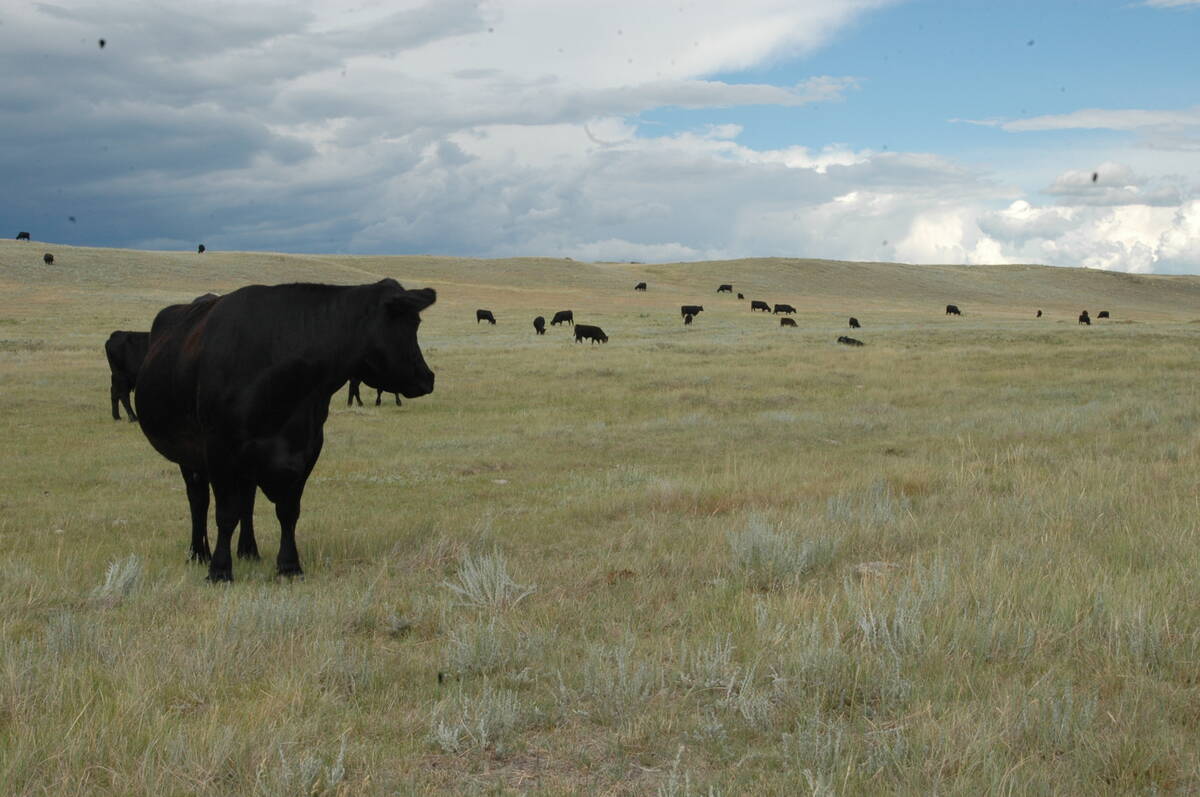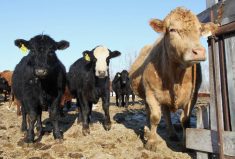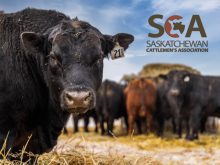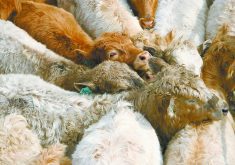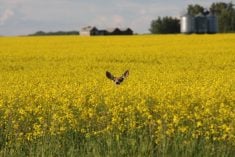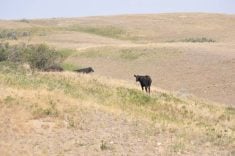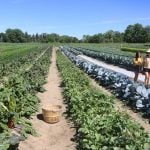WHITEWOOD, Sask. — This year’s change in the provincial checkoff has allowed the Saskatchewan Cattle Association to breathe a little easier when it comes to finances.
However, the overall fiscal picture remains tight.
As of Aug. 1, producers pay $5.25 per head, up from $4.50. The national checkoff remains at $2.50 and the provincial portion is now $2.75.
Read Also
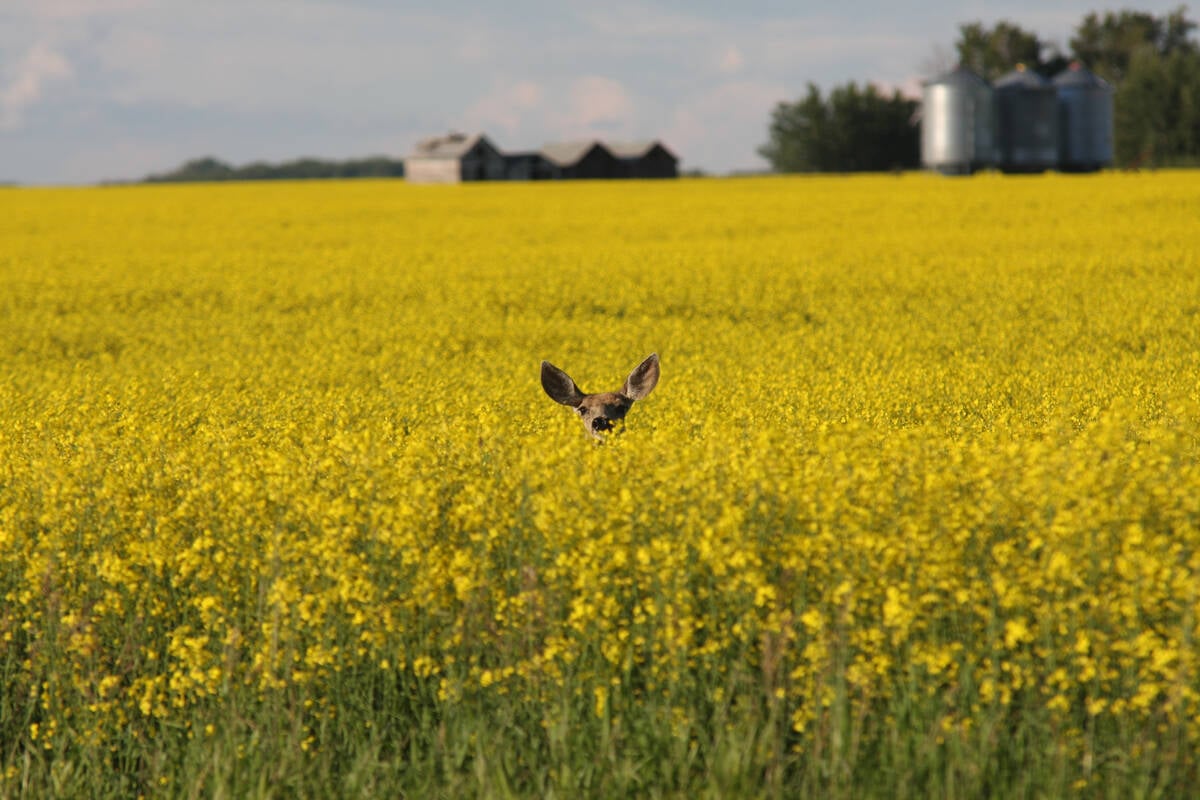
Drones now used to assess wildlife crop damage in Saskatchewan
Wildlife damage in Saskatchewan crops is now assessed by drones and artificial intelligence.
SCA executive administrator Leeann Clifford told producers at the District 1 fall meeting that 53 cents of that $2.75 automatically goes to the Canadian Cattle Association.
Of the remainder, 95 cents goes to SCA operations, 50 cents to research, 60 cents to industry partners and 17 cents for collection administration by dealers and auction markets. Some of that administration money is returned to Saskatchewan when collected in another province.
Before the increase, only 50 cents went to operations, 50 cents to research, 30 cents to industry partners and 17 cents for collection.
The organization has cut staff and expenses over the last few years to deal with the anticipated decline in the number of cattle going to market.
Clifford said the research budget has been cut by 10 per cent to keep costs down.
“It doesn’t mean that we’re taking anything away from research per se,” she said.
“We’re just trying to find the best research for Saskatchewan and producers.”
The SCA research committee, along with the provincial Agriculture Development Fund, just recently sifted through about 300 funding applications. Typically, the successful applicants are announced during the Saskatchewan Beef Industry Conference in January.
“If SCA doesn’t sponsor them, we can give them letters of support,” she added, saying that can help researchers find other funding sources.
On the operational side, going up to 95 cents doesn’t mean the association can spend wildly, Clifford said.
“We still pledge to make sure that we are fiscally and economically responsible,” she said.
That means fewer board or staff members might be at events. Board meetings have been set for every two months instead of monthly, with committee meetings held in between. More meetings are held online.
District 1 director Kyle Hebert said meeting every other month works fine as long as board members keep themselves involved and current.
He said they’ve been told there are fewer cows in the province now than in the 1950s.
“The marketings, I don’t know that they have quite showed us where cow owners are at yet, but that is coming,” he said.
The drought the last few years masked the actual numbers because cows went to town for that reason. Ideally, the drought will end and the true number will emerge, he said.
“When I talk to some of our dealers and marketers they feel that cattle have been marketed … 30 per cent more times than they did in the past,” Hebert said.
“That is from a weaned calf to an animal that goes to slaughter. They feel like that animal is being marketed 30 per cent more times in its lifespan than it used to. So it’s really hard to understand where our cow herd is actually at.”
He said there has to be a way to get a better handle on cow numbers so the association can track where it’s going and how to get there. When the drought ends and cows stop going to town, the marketing and check-off dollars will drop, he said.
SCA chair Chad Ross said the association has shown strong fiscal responsibility.
“We saw the lower marketings coming and so we addressed that. We cut costs wherever we could,” he said.
“Our research was down. Our sponsorships are down. Our trips are down.”
Ross said producers benefit from the checkoff by having the right people in the right places to advocate for them with governments.
He also reminded producers about the import levy on beef and cattle coming into Canada, saying few understand how it works. The levy has been $1 per head or carcass equivalent.
However, Ross said Ontario’s decision to raise its national portion of the checkoff to $2.50 from $1 puts it in line with other provinces, and that levy should go up next year.
The import levy is used for marketing beef products, and an increase would increase the amount available to more than $2 million.


